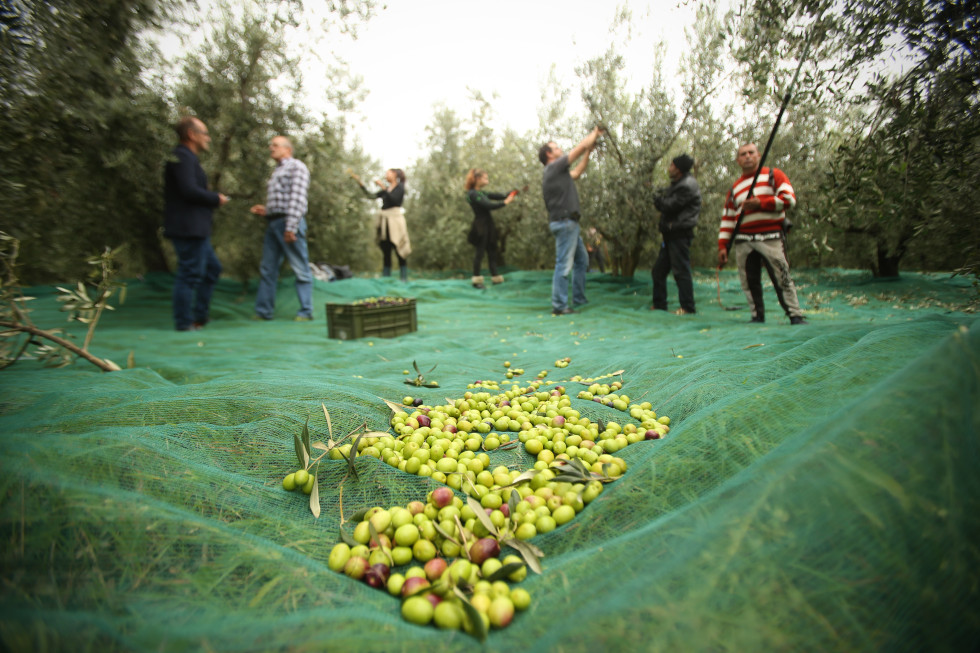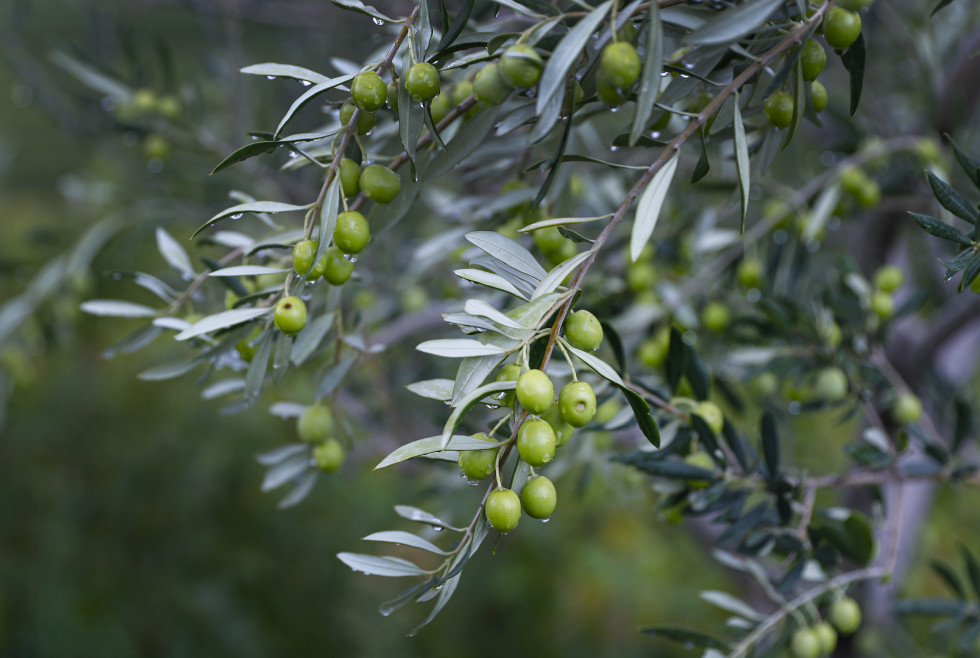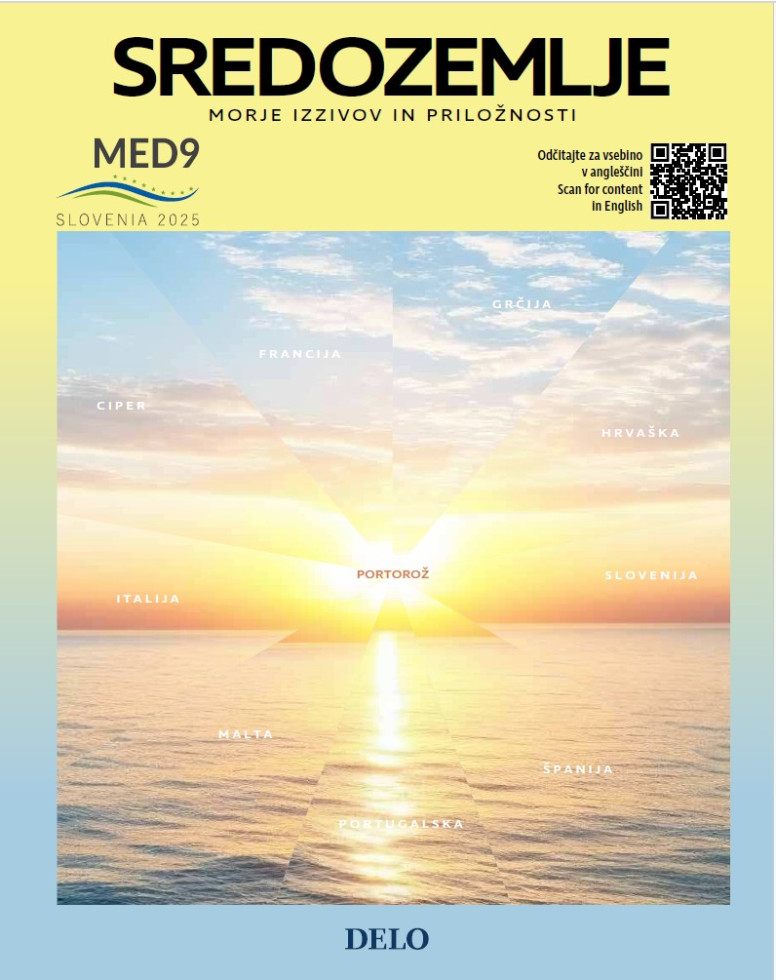Leveraging AI to enhance olive oil quality
Researchers at the Science and Research Centre Koper (ZRS Koper) are studying how to leverage machine learning, computer vision, and other technological solutions to solve common agricultural problems in vineyards and olive groves, such as pest infestations, water shortages and monitoring plant nutrient levels.
There are several reasons for introducing AI, robots, and other technologies into agriculture. One of the main issues is feeding the growing global population; current forecasts suggest that it will reach ten billion by 2050. Alongside the increased demand for food, the agricultural sector is already grappling with the effects of climate change, including shifting rainfall patterns, more frequent extreme weather events, limited fertile land and a shrinking workforce. AI can help strengthen crop resilience and reduce agriculture's environmental footprint. Although AI technologies for farming are advancing rapidly, their adoption remains uneven in practice. This is a highly interdisciplinary field, and solutions must be user-friendly and tools must bring clear benefits to end-users.
From grapevine to olive trees
The European Union promotes the development of solutions by co-funding various projects. One such initiative is AI-GRAPE, an interregional Interreg project involving organisations from Slovenia and Italy. Cross-border cooperation is essential in addressing these challenges, since pests and environmental changes know no borders. Exchanging knowledge and best practices is therefore crucial. The project has focused on introducing advanced technologies for effective pest control in vineyards. This is vital for grape growers, as it can significantly impact both the quality and quantity of the harvest and reduce the use for plant protection products. Modern technologies such as sensors, digital monitoring, AI, and remote sensing enable the early detection of potential issues and pest outbreaks, the development of prognostic models, and the optimisation of plant protection measures. This reduces the need for plant protection products and contributes to sustainable and resilient production.
Similar challenges arise in olive groves. At the Institute for Oliveculture, researchers within the AI-GRAPE project are developing solutions to control insects that attack olive trees. "Our colleagues used remote sensing with multispectral cameras to identify symptoms of Flavescence dorée disease in vineyards, with the aim of identifying diseased plants early on. We, on the other hand, are focusing on the olive fly," explained Dr Maja Podgornik, Head of the Institute. "By using thermal and multispectral images captured by drones and combined with 3D maps, as well as analysing the collected data (including vegetation indices), we obtain a precise and comprehensive overview of the cultivated area, the conditions of plants (e.g. drought stress or nutrition deficiencies), as well as the presence of harmful organisms. This approach gives us a more detailed understanding of the current situation in the field and enables us to quickly identify potential problems like pest attacks or diseases, and take timely action to minimise crop losses. Sometimes, the camera sees more than the human eye. By integrating weather measurements and data collected from long-term monitoring of the olive fly, we aim to develop a system similar to the one already well-established in viticulture."
Dr Podgornik added that they are currently using machine learning-based digital monitoring to collect and process data on the olive fly. The aim is to develop a predictive model to help manage the pest population more effectively. Researchers have been monitoring the olive fly for 20 years, she explained. "Each year, 15 to 20 monitoring sites are set up. We use pheromone traps to attract adult males and inspect the fruit to determine the stage of the pest's life cycle - whether the pests are in the egg, larval, or adult stage". Technological development has simplified fly monitoring. "We started with ordinary yellow sticky boards, we upgraded them with pheromone traps, and now we have automatic traps, which are equipped with cameras, allowing us to monitor them remotely from anywhere. Development is fast, but creating good AI-based predictive models requires a truly vast amount of data".
The olive fly is the most economically damaging pest in the Mediterranean, battled by olive growers in Slovenia and abroad. "Its prevalence depends heavily on humidity and temperature. Its population increases when relative air humidity exceeds 50% and the daily temperature drops below 24°C.The fly can destroy an entire harvest."It damages the fruit. The larvae feed on the fleshy part of the fruit. This damage creates entry points for fungi and bacteria, accelerating fruit decay and sometimes causing it to drop. We produce lower-quality oil from damaged fruit because the fly triggers oxidation processes."
Pets are primarily controlled through preventive and curative measures, most often by spraying. "The European Union is striving to reduce its use of plant protection products and fertilisers. These advanced methods and tools for the early detection of pest populations are therefore important; they are part of our efforts to develop alternative control methods. We are currently in an intermediate phase with no true replacements for existing control methods yet available. Researchers in many countries are working hard to develop new pest control techniques, improve the sustainable use of pesticides and optimise agrotechnological practices to ensure the sustainable use of natural resources. At our institute, we are strongly focused on optimising irrigation to increase water use efficiency, improve plant physiological status, maximise yield and quality, and support the sustainable use of natural resources," she explained.
Dr Podgornik noted that, back in the 1980s, Slovenian Istria was designated as an area with sufficient rainfall for olive growing without the need for irrigation. Today, however, that is no longer the case. Olive groves are frequently affected by heat stress due to high temperatures combined with drought. Although data show that the annual rainfall is sufficient, its distribution has changed. Phenological phases are also shifting. Due to above-average temperatures in the early spring, olive trees enter the growing season too prematurely, blooming early and exposing themselves to the risk of damage from cold air ingress from the north," said Dr Podgornik, adding that, although the olive tree is a robust plant, all these influences result in a significantly smaller final harvest. "In the past, a one-hectare grove produced six tonnes; today, some groves yield only two tonnes," she said.
Environmental changes are also bringing invasive species and new pests into the area. "They are definitely spreading. Winters are no longer cold enough for low temperatures to decimate pest populations. The synchronisation between beneficial and harmful organisms has also been disrupted. For example, phenological phases are advancing or lagging behind, meaning that pests appear before the beneficial organisms have had the opportunity to do their job."
Science hand in hand with olive oil producers
Researchers at the Institute for Oliveculture within the Science and Research Centre Koper work closely with olive growers to find the appropriate solutions. "In our research on the olive fly, we have partnered with 16 to 20 producers. We help them to take appropriate and timely action based on our data, and they help us to collect the data needed to develop predictive models," explained one of the researchers.
"The same was true for irrigation," she continued. "First, we tested the system at one grower's olive grove, and then at seven others. This enabled us to develop appropriate guidelines on suitable, technically sound and economically viable irrigation systems, and to test automated irrigation control," she said. "The only drawback was that we were unable to carry out some scientific experiments in commercial olive groves, as we simply cannot afford to lose the entire crop. We are therefore pleased that, over the past two years, we have established our own experimental groves. Here, we have the freedom to use even those methodological approaches where the outcome is uncertain and there is a risk of losing the entire harvest," she emphasised.
The olive grove is planted with six local olive varieties: buga, črnica, drobnica, istrska belica, mata and štorta. "The groves are equipped with numerous sensors that measure water status, temperature, and soil moisture – essentially all key environmental parameters. This year, we have also installed a fertigation system that combines irrigation and fertilisation," she explained. The work still requires a human hand, as the Institute's staff regularly carries out additional measurements in the groves.
"The field is definitely becoming more interdisciplinary. We're fortunate to have a relatively young team at the institute who have strong backgrounds in the natural sciences, as well as expertise in programming and artificial intelligence. We are constantly collaborating with experts in this field. However, AI experts are in high demand across all sectors, and many of them can find jobs in industries that offer significantly higher salaries than agriculture," she pointed out.
Maja Podgornik emphasises that Slovenian olive growing has great potential, as groves are expanding. However, she says that there is still significant room for improvement. "The sectoral regulation is not the best," she said. "Another issue is the ageing population of olive growers with no young people willing to take over. As mentioned, younger generations are facing increasing environmental challenges." This is why she sees an opportunity for introducing advanced technologies and solutions. "AI-based predictive models are certainly a welcome advantage. So are remotely controlled robots and drones for spraying. These would reduce the amount of physical work required. Smart glasses equipped with various sensors and cameras are already being developed for use in other industries. These glasses would enable users to see exactly which parts of a plant to prune, and growers would be able to connect with other experts remotely. At our institute, for example, we have collaborated on the development of an electronic nose to assist with sensory oil analysis, a task currently performed by nine trained tasters who determine the quality of the oil."
She added that the institute is also involved in other innovative projects that could contribute to a better future: "A good example is the development of a soil improver, where we are studying the reuse of olive pomace and other waste from the food industry for fertilisation purposes."





